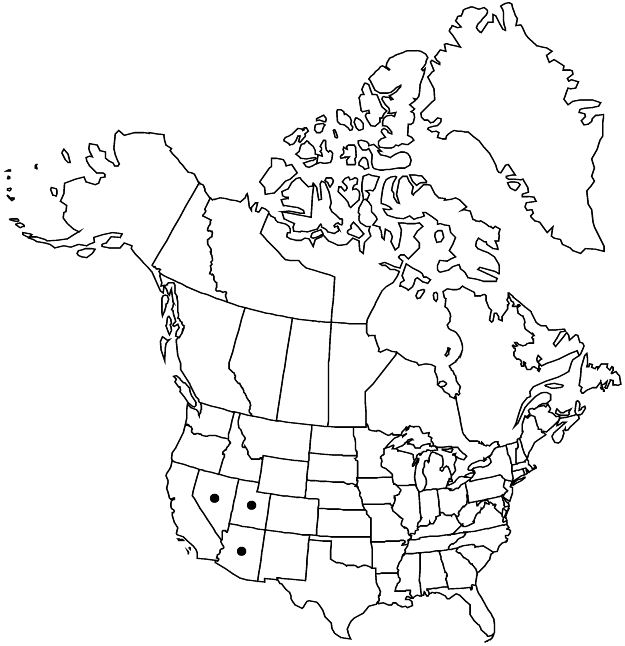Mentzelia integra
Contr. U.S. Natl. Herb. 25: 363. 1925.
Plants winter annual or biennial, candelabra-form. Stems solitary, erect, straight; branches distal or along entire stem, distal or proximal longest, antrorse, straight, proximal not decumbent; hairy or glabrescent. Leaves: blade (23–)29–78.4 × 3–14.6 mm, widest intersinus distance 1.6–8.5 mm; proximal oblanceolate or elliptic, margins dentate to serrate, teeth 4–12, proximal sides slightly antrorse, distal sides perpendicular to leaf axis, 0.8–5.3 mm; distal oblanceolate, elliptic, lanceolate, or linear, base not clasping, tapered, margins usually dentate to serrate, rarely entire, teeth (0–)2–10, proximal sides antrorse, distal sides perpendicular to leaf axis, 0.4–5.3 mm; abaxial surface with simple grappling-hook, complex grappling-hook, and needlelike trichomes, largest trichomes with pearly white bases, adaxial surface with needlelike trichomes. Bracts: margins entire. Flowers: petals golden yellow, 8.6–13.9(–17.4) × 2.9–4.7(–6.1) mm, apex rounded, glabrous abaxially; stamens golden yellow, 5 outermost petaloid, filaments narrowly spatulate, slightly clawed, 6.7–13.2(–15.4) × 1.7–4.3 mm, usually without, rarely with, anthers, second whorl with anthers; anthers straight after dehiscence, epidermis smooth; styles 4.8–11.3 mm. Capsules cup-shaped, 6.2–11.4(–13) × 6–8.4 mm, base rounded, not longitudinally ridged. Seeds: coat anticlinal cell walls wavy, papillae 5–13 per cell. 2n = 20.
Phenology: Flowering May–Sep.
Habitat: Roadsides, outcrops, hillsides, washes, dunes, sandy, gravelly, or volcanic soils.
Elevation: 800–1800 m.
Distribution

Ariz., Nev., Utah.
Discussion
Mentzelia integra is found in northwestern Arizona, southeastern Nevada, and southwestern Utah.
Selected References
None.